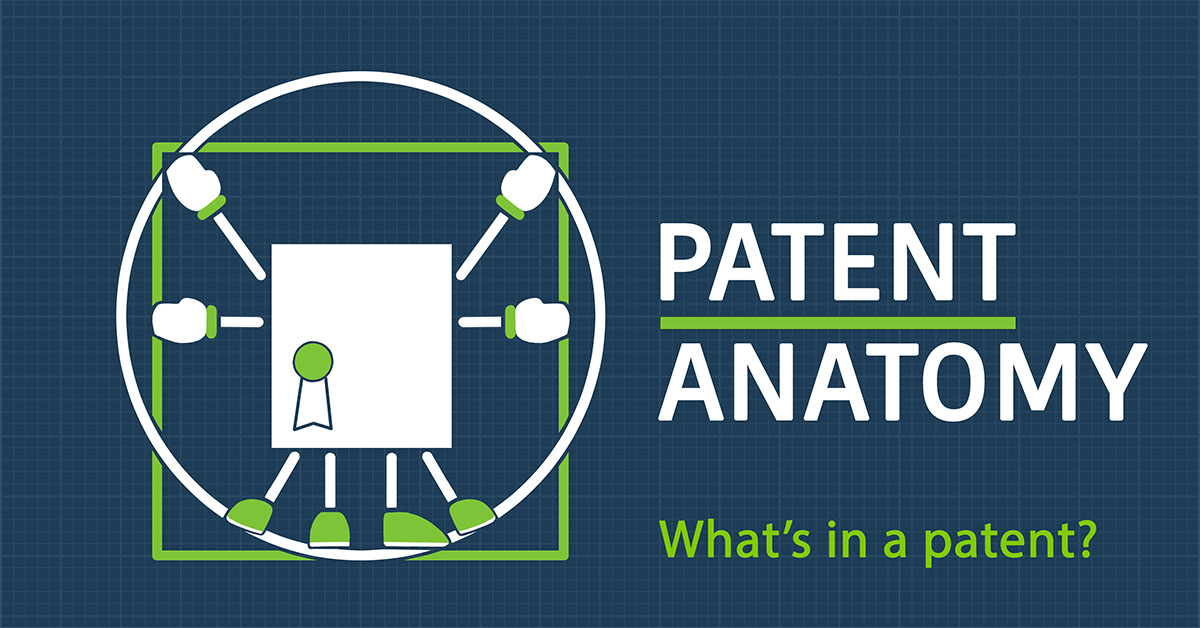|
By: Staff
How to Read and Understand Patents
What’s actually in a patent? How do you read a patent? What can you learn from reading one? And where do you even find them in the first place?
Patenting can be such an essential part of early startup years, but it’s a very complex domain, with loads of special vocabulary, and all of that can make it seem less accessible than it was really designed to be. The following is a guided tour, taken through the anatomical lens of the most intrinsic and tangible piece of the process – the patent application. Our goal in sharing this is to reduce the barrier of entry, unlock for you one of the greatest libraries in the world, and help set you up with clear eyes going into your own patent journey. It’s through the understanding of a patent's structure and parts, that you’ll quickly begin to see more clearly how the broader world of patenting works! We will break down the key anatomy, cut through the arcane terminology, and provide tips on how you can use that information for your competitive advantage. By the end of this article you’ll know where to find patents, how to read patents, and what you can – and cannot – learn from patents. What is a patent?
A patent is a Constitutionally created property right granted for an invention and is one of several ways to protect intellectual property. A patent is essentially a deal between the applicant and the United States government, in which if the patent is issued, the patent owners are granted a limited monopoly of 20 years, with the exclusive right to prevent others from making, using, offering for sale, or selling the patented invention. The other half of the bargain is that this government-granted window of exclusivity is traded in exchange for an enabling public disclosure that teaches the public how to make and use the invention. This disclosure happens through the publication of a patent application. The purpose of this deal is to advance the welfare of the country by promoting the long term progress of science and the useful arts.
What is a patent application?
A patent application is basically a specially structured letter to the patent office that describes an invention and recites some claims that the inventor believes she's entitled to. It facilitates the public disclosure and is the basis of a protracted conversation between the patent office and examiner and the patent office and the applicant – a process that is called patent prosecution. Inventors can draft, file, and prosecute on their own or work with the assistance of a registered agent who can do these things on their behalf. Once you submit your patent application, you will have the right to claim patent pending status.
Why get a patent?
A granted patent confers upon its owner exclusive rights to exploit the invention commercially, including the monopoly to manufacture, use, and sell the invention. The recognition of a legally-binding monopoly position allows inventors to monetize their invention, while simultaneously preventing others from doing so. The decision to obtain a patent can be influenced by a range of factors, such as the nature of the invention and the specific industry. In sectors such as biotechnology, a patent can serve as a key attractor of investment and a catalyst for licensing opportunities. It could be the deciding factor for the success or failure of a startup. On the other hand, such as in consumer goods industries, a patent can be leveraged as a marketing tool, and can facilitate more favorable negotiations with suppliers, customers, and partners.
A patent is also an important tool for protecting your idea before talking with others. This is definitely something you want to consider doing before marketing an invention or attempting to pitch your product or company to investors. Public disclosure or offer for sale without filing a patent application puts you at a tremendous risk for idea theft. In fact, public disclosure before filing a patent application, is one of the top mistakes we see among inventors, that can make later patentability much more difficult, if not impossible. A patent can serve as a key attractor of investment and a catalyst for licensing opportunities. It could be the deciding factor for the success or failure of a startup. Why not get a patent?
Obtaining and maintaining a patent involves a significant investment in both time and monetary resources. While a granted patent offers a legally recognized monopoly and potential protection, it also requires public disclosure of the invention's details. This information becomes a matter of public record and can potentially provide valuable insights to competitors. Enforcing a patent against infringement can be a complex and costly process. In certain circumstances, it may be more advantageous for the inventor to maintain the confidentiality of the invention as a trade secret rather than seeking patent protection.
Who reads a patent?
Beyond understanding what a patent is and why you do or don’t need one, it helps to understand who it’s written for. Over the course of its life, an application can have multiple audiences – all with very different roles to play and goals in consuming and interpreting. Who all might look at an application and why?
Patent Office Examiner. A patent’s first audience is going to be an examiner at the Patent Office. You and your patent practitioner will work with the examiner through the process of prosecution as you move your patent application toward a granted patent. The application will face a very high level of scrutiny from examiners because the office will need to assess it for various metrics (e.g., usefulness, novelty, obviousness, and enablement) based on the Patent Office rules and procedures. Investors. After getting your patent pending designation (by filing a provisional, nonprovisional, or international patent application), you can now approach investors with a safeguard in place. This will be a much higher level look and will largely be focused on what kind of protections the patent affords, but patent quality still matters a great deal. In an early stage company, funding is critical for survival, so you want the investor to believe in your technology. Courts/PTAB. Once you have a granted patent, you may either need to assert your rights against infringers or potentially defend against someone trying to invalidate your patent. This could (unfortunately) involve proceedings at the USPTO with the Patent Trial and Appeal Board or within the court system including District Court, Federal Circuit Court, and maybe even the Supreme Court. This audience can include lawyers, judges, and jurors – all with varying degrees of technical and legal expertise. A person skilled in the art. Going back to the grand bargain mentioned above, the ultimate intended audience (from the government’s perspective anyway) is a person skilled in the art, who is looking to build or build upon the idea – and hopefully with a lucrative license from you! In legal parlance, you will also often see this referred to as "a person having ordinary skill in the art” or PHOSITA, and is the patenting persona of a person who has an average knowledge/skill level in a particular art. What can I learn from a patent?
We break the parts of an application down in great detail in sections to follow, but it is helpful, at a high level, to understand the kinds of information you will and won’t find in a patent. You will be able to find the following in any published or issued patent application:
What won’t I learn from a patent?
There is also a fair amount of invention and patent associated data that you might expect to find in a patent that you won’t. This is largely due to the static nature of the document once published or issued. The patent is frozen in time and will not tell you what happened later. You will not find the following in a patent:
Some of this information is freely available in other tools like the USPTO’s Patent Center, via other private, paid databases like LexisNexis, and via old school methods like picking up the phone. What is the difference between a published application and an issued patent?
One point of confusion we often see, especially among inventors newer to patenting, is in the difference between a published application and an issued patent. The difference between a published application and an issued patent lies in the stage of the patent prosecution process we mentioned earlier. Patent prosecution refers to the interaction between the patent applicant and the Patent and Trademark Office (PTO) examiner. The PTO examiner ensures that the claimed invention is useful, novel, and non-obvious. If the claims don't meet the standards, the examiner raises objections and the applicant can modify the claims or argue with the examiner.
A published application is the initial document filed by the applicant, including the claims they want to protect. It’s worth mentioning that the application gets published 18 months after its initial filing date whether or not it results in an issued patent unless there’s a non-publication request. An issued patent, on the other hand, is a granted patent that has gone through prosecution and has claims that have been approved by the examiner. Everything else about the document will be the same as the published application.
Practical tip: The distinction between the two can be identified by looking at the upper right-hand corner of the document. A published application has a "Pub. No." label, while an issued patent has a "Patent No." label. The published application also has a 7-digit number preceded by the year of publication, while an issued patent has a 6 or 7 digit number.
What are the types of patents?
There are several different types of patents to consider, depending on the nature of your invention and what aspects you’re looking to protect.
Sections of a Patent Application
A patent application has the following four sections: (1) Front/cover page(s), (2) Drawings, (3) Specification, and (4) Claims
(1) Front/cover page(s) The front page(s) of a patent typically include the Title, an Abstract, and Drawings. These provide a summary of the invention, but are not the main sources for determining the scope of the patent. The cover sheet is usually prepared and filed by the Patent and Trademark Office (PTO) when the patent is published, based on information provided by the practitioner. (2) Drawings The Drawings (also commonly referred to as figures) in a patent are intended to help the reader understand the invention and typically show all the elements claimed. For many types of applications, the figures can basically function as a storyboard for explaining the invention. Exceptions are rare, such as for chemical compounds, but most US patents include drawings. If a drawing is labeled as "Prior Art", it documents related processes that existed before the invention and is not part of the claimed invention. (3) Specification The specification, which follows the front page, provides context for interpreting the claims section. It usually includes the following elements:
Practical tip: The background can be the best starting point for a reader, as it provides an understanding of the inventors' perspectives on the current state of the field and any problems or deficiencies they aim to address.
Defining new things sometimes requires new vocabulary. The specification also gives inventors some flexibility in defining terms (usually in the Detailed Description), as they are essentially their own lexicographer. Terminology and definitions can be included in the specification, and the claims are interpreted in part based on these definitions, as well as the general state of the art and the plain meanings of terms at the time of filing. (4) Claims The Claims section is the heart of a patent application and is located at the end of the document. The Claims are the main focus of an application and are the subject of argument during prosecution. They are reflected in the Summary, Detailed Description, and Abstract sections. Old West Metaphor. In trying to break down some of this vocabulary, it can be helpful to think of claims in the context of an old west metaphor, where the patent claims are likened to a mining or homestead claim. An old west claim would need a map of the context, the surrounding landscape, and a clear delineation of the exact boundary of the mine being claimed within the surrounding landscape. Everything else in a patent application largely exists to provide context for the invention claims, but the claims themselves point out the exact boundaries of what the inventor believes they are entitled to own. Claims Define Infringement. The main purpose of claims is to be able exclude others from making or using the invention. An issued claim provides the claim owner with a monopoly for a limited time period (20 years from filing) and can be very valuable. The claim owner can sue for infringement if someone is practicing the invention. The basic question in infringement cases is whether every element of the claim is being practiced by the alleged infringer. If I have claimed A, B, and C – and someone tries to just copy A and B on the path to doing something else, that is not infringement. If someone copies A, B, and C, that is infringement. If someone copies A, B, C, and adds D, that is infringement, but that person could still file to patent D, but would not have freedom to operate D without obtaining a license from you for A, B, C. Ninety percent of the mental exercise in drafting patents is in the strategy of looking around corners, anticipating the future, and trying to capture as many would-be infringers as possible. Ninety percent of the mental exercise in drafting patents is in the strategy of looking around corners, anticipating the future, and trying to capture as many would-be infringers as possible. Where can I find patents and their related information?
The universe of patent literature is one of the great libraries of the world – and it's free! The amount of stored knowledge is truly under appreciated. Once you know how to search or you have someone searching for you, you can learn just about anything!
To find and download a patent or patent application, you can use the following free search sites:
If you're looking for professional assistance, you can also reach out to practitioners or search firms who have access to additional databases and can provide deeper analysis. If you're interested in learning more, we encourage you to check out our episode on Patent Searching.
Related Resources
Authors & Contributors.
0 Comments
Leave a Reply. |
Ashley Sloat, Ph.D.Startups have a unique set of patent strategy needs - so let this blog be a resource to you as you embark on your patent strategy journey. Archives
July 2024
Categories |







 RSS Feed
RSS Feed